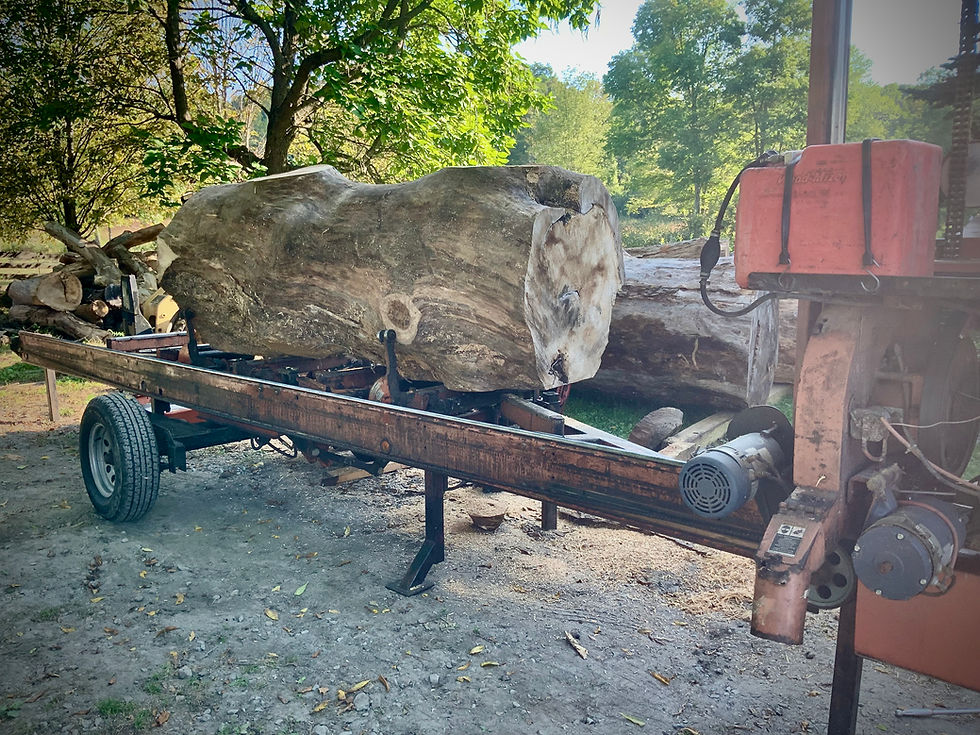Understanding the Difference Between End Grain and Side Grain Cutting Boards
- mberghold
- Apr 23
- 3 min read
Updated: Jul 17

Introduction to Cutting Boards
Choosing the right cutting board can greatly affect your cooking experience. Two popular types are end grain and side grain boards. Each has unique characteristics that cater to different needs and preferences. In this post I’ll attempt to explain those differences to help you make an informed decision.
End Grain Cutting Boards
End grain cutting boards feature a unique construction method. In these boards, the ends of the wood fibers are positioned facing up. This design offers several benefits:
Durability: End grain boards are exceptionally resilient. They endure cuts and scratches better than their side grain counterparts. This grain orientation reduces the likelihood of damage over time.
Self-Healing Properties: One aspect of end grain is its self-healing ability. When you cut into the board, the fibers respond by closing up. This feature makes knife marks less noticeable, keeping your board looking pristine.
Maintenance Needs: To maintain a board’s appearance and durability, an end grain board should be oiled regularly.
Cost Considerations: Due to the intricate construction and the amount of wood required, end grain boards tend to be more expensive. However, the benefits they offer often justify the investment.
Side Grain Cutting Boards
Side grain cutting boards are designed with the long sides of the wood fibers facing up (think of a bundle of straws held paralell to the floor). This type of board is popular for many reasons:
Affordability: Side grain boards can be more budget-friendly, especially smaller models made from various wood strips. However, single-piece or live edge boards may be pricier due to their unique characteristics.
Aesthetic Appeal: These boards often boast a uniform look, highlighting the natural wood's grain patterns along the edges.
Durability Compared to End Grain: While side grain boards are still durable, they are not as resistant to cutting and damage as end grain boards. It's best to avoid using serrated knives on them, as they can leave deeper gouges.
Ease of Maintenance: Cleaning and maintaining side grain boards is generally straightforward. However, they tend to show knife marks more conspicuously over time. We plan to create a detailed article soon on restoring edge grain boards. in the meantime, please feel free to contact us for tips on care.
Comparison Between End Grain and Side Grain
Durability
End grain boards offer superior durability compared to side grain boards. This makes them better suited for heavy use in kitchens where chopping and slicing occur frequently.
Maintenance Requirements
Both types require care, but end grain boards need regular oiling to maintain their resilience. Side grain boards, while easier to maintain, may not retain their appearance as well over time.
Cost Factors
When considering your budget, side grain boards provide a more economical option. However, investing in an end grain board might be worthwhile for those seeking longevity in their kitchenware.
Which One Should You Choose?
Choosing the right board often comes down to personal preferences and needs. If you prioritize durability and are willing to invest a little more, end grain boards could be a perfect option. Conversely, if you’re looking for something less expensive, a side grain board may be more appropriate.
We offer quite a few styles of boards. If you’re looking for something on which to serve a few appetizers, a large pizza, or a generous roast turkey, I’m sure we can help you make a selection. If you are unsure which might be most appropriate for you, or as a gift, please contact us!

No hard sell. Just good information clearly presented. As a self-professed wood nerd 🤓, I’ll be back to your blog to read more. Gorgeous products btw!